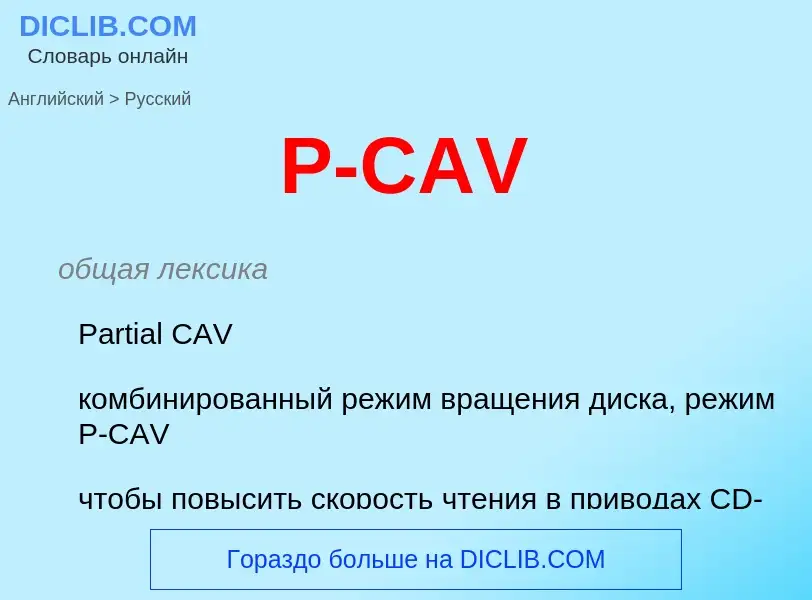Translation and analysis of words by ChatGPT artificial intelligence
On this page you can get a detailed analysis of a word or phrase, produced by the best artificial intelligence technology to date:
- how the word is used
- frequency of use
- it is used more often in oral or written speech
- word translation options
- usage examples (several phrases with translation)
- etymology
P-CAV - translation to English
Definition
Wikipedia
In optical storage, constant angular velocity (CAV) is a qualifier for the rated speed of any disc containing information, and may also be applied to the writing speed of recordable discs. A drive or disc operating in CAV mode maintains a constant angular velocity, contrasted with a constant linear velocity (CLV).
A typical CD-ROM drive operates in CLV mode, in contrast to a floppy or hard disk drive, or gramophone, which operates in CAV mode. In CAV mode, the spindle motor turns at a constant speed, which makes the medium pass by the read/write head faster when the head is positioned at the outside of the disk. In contrast, in CLV mode, the spindle motor speed varies so that the medium passes by the head at the same speed regardless of where on the disk the head is positioned.
If the disk is recorded at the same areal density throughout, then when read or written in CAV mode, the data rate is higher for the outer tracks than for the inner tracks, whereas in CLV mode, the data rate is the same everywhere.
An advantage of CAV mode over CLV is that the drive mechanism is easier to engineer (less expensive to build). Another advantage is that a device can switch from reading one part of a disk to reading another part more quickly, because in CLV mode, when the device moves the head in or out, it must change the speed of the disc.

![Constant Angular Velocity (CAV) [[LaserDisc]], showing the NTSC field setup and individual scanlines. Constant Angular Velocity (CAV) [[LaserDisc]], showing the NTSC field setup and individual scanlines.](https://commons.wikimedia.org/wiki/Special:FilePath/Laserdisc CAV.jpg?width=200)
